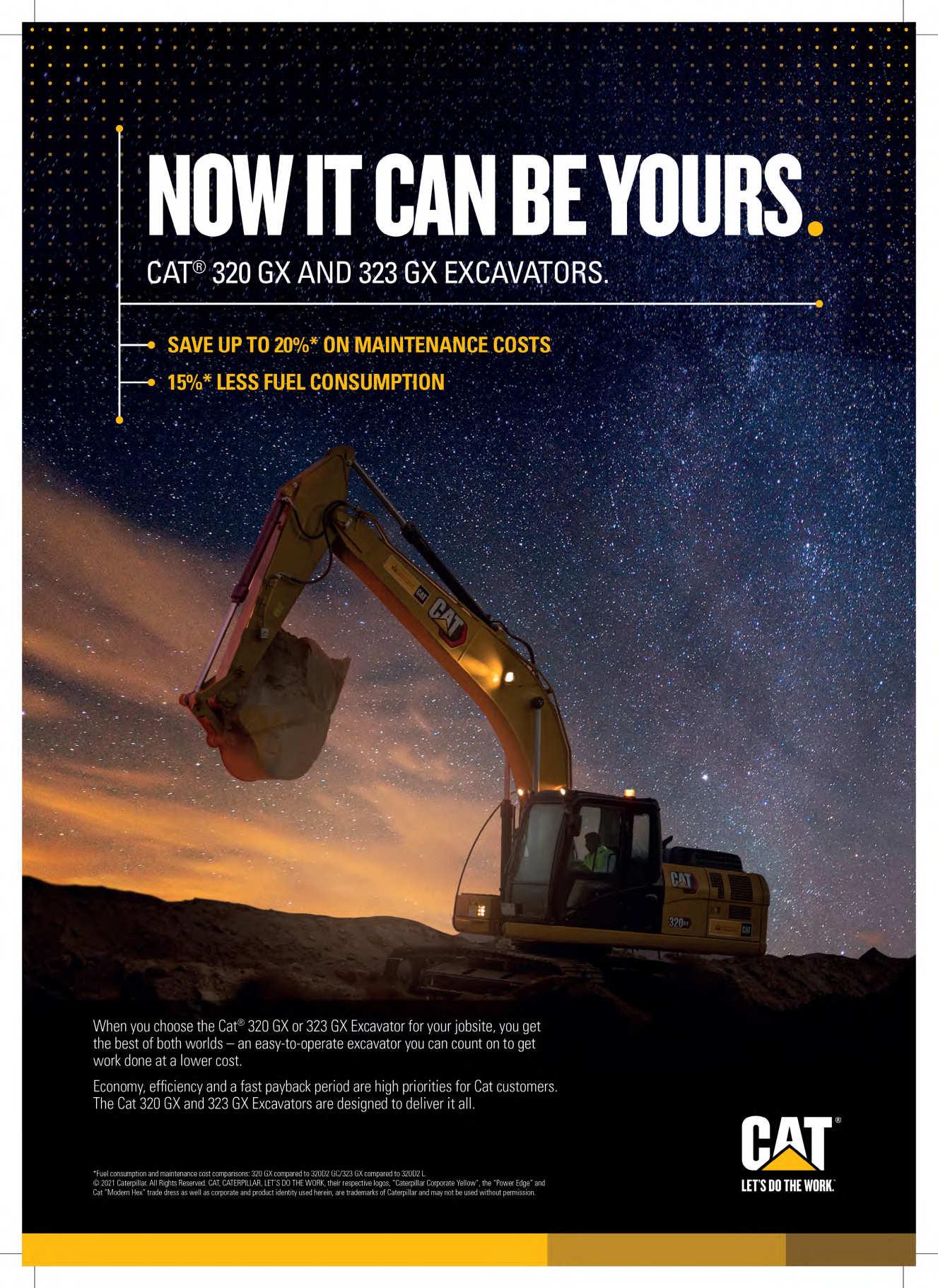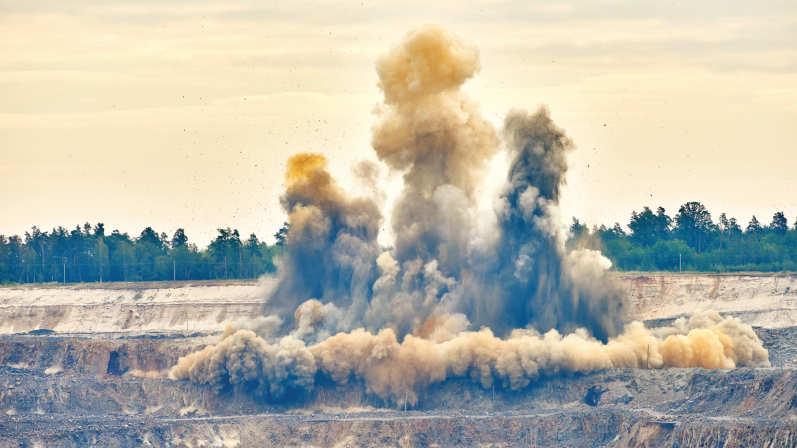
22 minute read
A booming mining explosives market
Blasting a way through
The mining explosives market is booming despite all the economic uncertainties of the past year amid high demand for commodities. Martin Clark reports.
Commercial explosives have long been used in the mining industry to extract ore and discover new orebodies.
Given the size of its mining industry, South Africa is one of the leading manufacturers and users of commercial explosives.
But these sensitive products are also used across other industries too, from oil and gas to forestry and construction, to assist in the building of new roads and infrastructure or in the laying of pipelines. There are many other applications.
Well-known players in South Africa with an interest in the commercial explosives market include Sasol and AECI.
These big industry heavyweights have both played an integral role in supporting the country’s rise to prominence as a global mining power. Their products are similarly used to support mining activity elsewhere across the continent.
Other international renowned players, such as Normet of Finland, are active in a supporting role, building charging products and machinery, or providing expert advice in this critical area.
Locally, another specialist is South Africa’s BME, part of the Omnia Group, listed on the Johannesburg Stock Exchange.
BME blasted its way to a South African record at the end of 2020 at a manganese mine in Northern Cape province. Using its proven AXXIS electronic initiation system, it was able to plan and execute a blast of 4,647 detonators.
Just a few months earlier, the company had broken a previous record at the same mine by initiating 3,780 detonators in a single blast.
Mining companies across Africa have used commercial explosives to unearth fresh deposits and break through to areas with new potential.
Enaex Africa JV launch
South African industrial giant Sasol launched its explosives division in 1984 and sells and distributes commercial explosives, as well as a wide range of specialised blasting accessories.
Its portfolio includes a diversified range of bulk explosives used in underground mines, opencast mines and quarries. The company also supplies value added services to many of southern Africa’s leading mining companies.
Sasol developed the worldleading Expan low-density ammonium nitrate (LDAN) technology for more efficient and cost-effective blasting operations.
It’s also a precise and delicate business: the Sasol Blast Calculator, downloadable on the Google or Apple app stores, is an on-the-go tool that can, in real time, calculate any opencast mining blasting requirements.
But the times are changing, and last year Sasol established a new explosives joint venture – Enaex Africa – in a collaboration with Enaex, a subsidiary of the Sigdo Koppers Group.
The goal is to create a world-class explosives business for the African continent.
Founded in 1920 in Chile, Enaex brings to southern Africa a century’s experience in the global explosives market with its core business of ammonium nitrate production.
It is also one of the few explosives companies in the world that can produce and offer the entire spectrum of products and solutions to execute the blasting process.
Francisco Baudrand, chief executive of Enaex Africa said the launch marks “a new venture on a new continent” for the Chilean parent company.
“This joint venture is a platform of growth for Enaex not only in southern Africa, but also for us to become the leaders in explosives and blasting services for the mining industry on the African continent.”
The first shipment of Ammonium Nitrate Porous Prill (ANPP) – Prillex – arrived from Chile in Walvis Bay, Namibia, in April. The import will serve as a back-up for the Sasol Prill plant, which serves existing customers in South Africa, Lesotho and Namibia.
Enaex is also a leader in related areas such as digitisation, where it has deployed state-of-the-art technology to add value in the blasting process. Enaex Bright is a digital platform designed for blasting optimisation. The company also offers a range of automated and robotic products and services both for underground and opencast mining for the loading of blasting agents and safe execution.
AECI reports strong demand
Certainly the market for mining explosives has proved itself to be robust in the past year or so, even with all the uncertainties triggered by the Covid-19 crisis.
Global demand for commodities has fuelled the need for explosives to unlock new mine deposits.
AECI’s mining explosives business unit has enjoyed a positive time during this uncertain period.
In its interim report, for the year ended 30 June 2021, it reported a better year-on-year result reflecting buoyant conditions in the global commodity environment.
It noted that good progress was made in replacing volumes of bulk explosives lost in South Africa’s iron ore and platinum surface mining sectors in the prior year. However, offtake from South Africa’s coal mining sector was below expectations and challenges in Indonesia resulted in a 9.6% decline in overall bulk explosives volumes.
A 33% increase in initiating systems volumes was due to the resumption of activities in the underground gold and platinum mining sectors.
There was also a solid performance in Zimbabwe and Botswana, the company noted. Likewise, combined volumes in Central Africa and East Africa were 25% higher than in the prior corresponding period and those in West Africa remained robust.
Going forward, the company anticipates that demand for its products will be sustained.
Safety, sustainability and innovation
As well as actual explosives, other specialised industry equipment is needed for the safe and efficient storage, deployment and use of these dangerous mining materials.
Normet, a Finland-based company, is active in this niche, producing a range of equipment to help customers build the safest places underground, both in mining and tunnelling.
It operates in over 50 locations in 33 countries worldwide and has delivered more than 13,000 builtfor-purpose underground machines.
South Africa is a key market, with Normet know-how utilised in mines such as Palabora, the nation’s only producer of refined copper.
In underground blasting, Normet’s Charmec systems are built to improve safety and productivity and contribute to high quality and cost-effective bulk explosive charging. They also offer a consistently high resale value with low lifetime costs.
During the past four decades hundreds of mobile Charmecs have been delivered to hard rock mines and civil tunnelling projects worldwide.
The company has developed its modern emulsion charging concepts in close cooperation with explosives manufacturers as authorities usually regard the units where the explosive is sensitised on the charging unit as explosive factories.
As in other parts of the industry, it continues to innovate and update.
During a recent virtual mining innovation showcase, Normet presented a glimpse into its new machines and equipment and presented a testimonial from Australia where the Normet SmartDrive battery electric explosives charger Charmec MC 605 VE SD in 2021 has been trialled.
Using battery-based charging can make the charging process safer, especially within the explosives context, with no need to plug in to the mine’s electric grid. ■
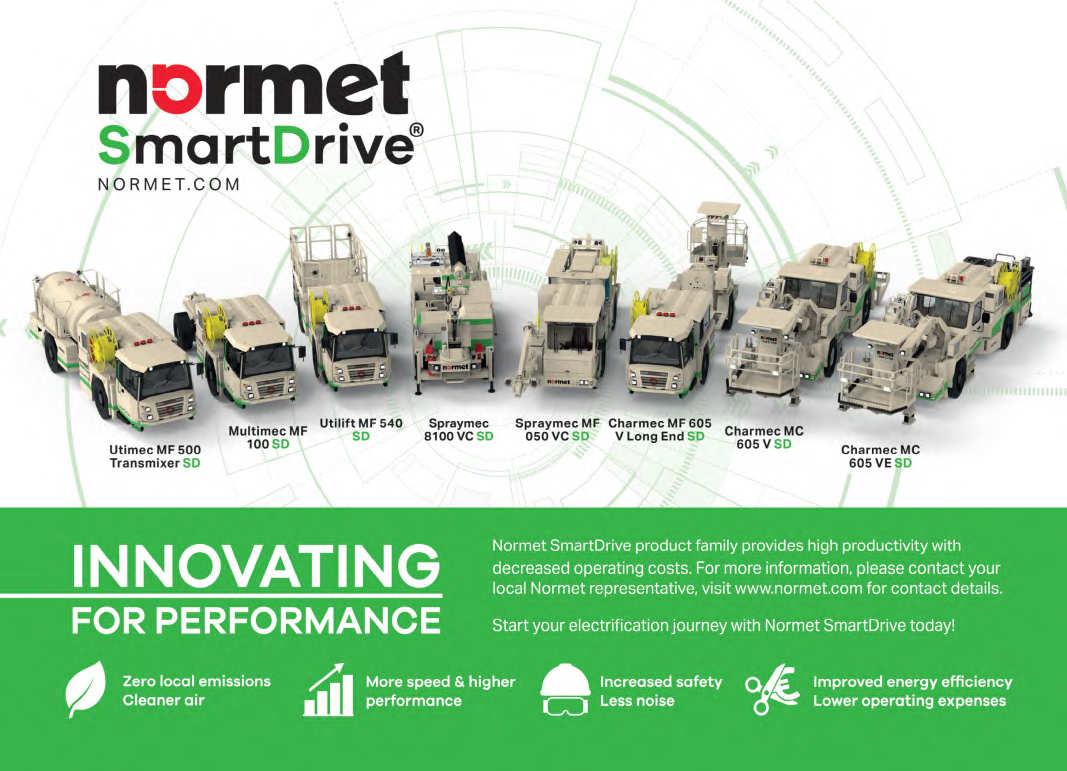
AI to slash fatigue events and downtime
Mantrac has helped the Barrick Gold Mine in north Mara, Tanzania, after it encountered several cases of unplanned downtime from mishaps and fatigue events.
The DSS is designed to keep operators safe, equipment working and productivity up.

The Barrick Gold Mine contacted Mantrac to help resolve a recurring issue on their site. They were witnessing 12 accidents per year, including one where an operator was driving a truck that rolled over and injured him.
Mantrac suggested and implemented state-of-the-art fatigue detection technology via a comprehensive change management programme for the site. A Driver Safety System (DSS) was designed to keep operators safe, equipment working and productivity up.
Learning from technology that has been tried and tested on 5,000 trucks worldwide, Mantrac designed a total safety and productivity solution that engaged 90 operators of 15 trucks over a three-month transition period. Helping to harness every valuable resource

With custom smart bands, operators were able to manage sleep and fatigue. The trucks were also fitted with AI kits that detect microsleep events and alerts the operator with an audio signal and seat vibrations.
A recording of the event is also sent to a team dedicate to managing health and safety on the worksite via SMS. By detecting eyelids closing, eyeball movements, chin orientation and distraction events, this technology from Mantrac caught instances of distracted driving, microsleep, speeding and more.
The management received daily incident reports from Mantrac consultants, in addition to data dashboard access.
With smart wearables for drivers and AI-powered fatigue detection technology, Mantrac’s DSS helped Barrick achieve 98% reduction in incidents on the mine site with 90 operators engaged for training on fatigue detection. The DSS was executed in a three month period. ■
EPIROC SPEEDS UP MINING ELECTRIFICATION
Epiroc, a leading productivity and sustainability partner for the mining and infrastructure industries, is now offering customers conversion kits that seamlessly transform loaders from diesel-powered to battery-electric driven.
Battery conversions are already underway in Canada, with Epiroc’s Scooptram ST1030 loader being the first vehicle to undergo the transformation. Evolution Mining, an Australianbased international mining company, earlier this year ordered the conversion of two dieselpowered Scooptram ST1030 machines for use at its gold mine in Red Lake, Ontario, Canada. In addition, it also ordered two new Scooptram ST14 Battery loaders and one Minetruck MT42 Battery to add to the fleet at Red Lake.
Kits to convert the Scooptram ST1030, one of Epiroc’s most widely used loaders, are now available to order through most of Epiroc’s customer centres worldwide. Conversion kits for other machines will follow, including for the Scooptram ST14 loader.
“Converting existing diesel machines to battery electric will be a smart and cost-efficient alternative for mining companies that want to electrify their operations,” said Helena Hedblom, Epiroc’s president and CEO. “It will be an important part as we together continue the drive toward emissions-free operations.”
The end result is the same or higher performance level as diesel machines with all the added benefits of battery technology, which includes zero emissions and a healthier underground environment for operators.
Epiroc’s service organisation will offer a quick turnaround time for the conversion, which is included in a midlife rebuild and puts machines back on site ready for heightened performance without unnecessary disruptions to production.
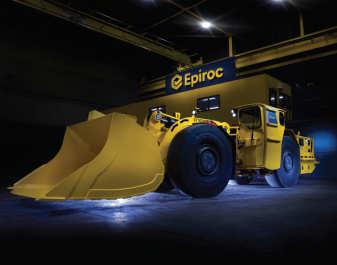
Image Credit: Epiroc
An Epiroc Scooptram ST1030 loader that has been converted from diesel to battery electric.
Franna, a global leader in the design and manufacture of pick and carry cranes, has unveiled the Franna Minemaster range, a series of pick and carry cranes with lift capacities ranging from 15t to 40t.
The Franna Minemaster range has been specifically designed to meet the vigorous safety requirements and complex operating environment of the modern day mine site. Each individual crane can be customised to meet local requirements, with an extensive list of mine spec options available for customers to choose from.
Danny Black, general manager at Franna, explained, “Franna has been supplying the global mining industry with robust lifting solutions for over 40 years, working alongside a number of leading contractors such as Rio Tinto, BHP & Glencore.
“In line with our growing export sales, we have developed this range to meet the needs of the markets and industries we serve. Whilst mining has always been at the forefront of the Franna business, many of our international customers are not fully aware of the numerous mine specs that we can offer. As well as helping to educate the marketplace, our Franna Minemaster range provides mining contractors with heavy duty lifting solutions that are tailored to their needs and do not compromise on safety or performance.”
Franna cranes have a proven ability of operating safely on the challenging terrains that are commonly associated with mining (for example, poor underfoot conditions). The robust design and superior operating benefits allow them to thrive in both open pit and underground mining conditions.
Each machine from the range comes fully equipped and ready to work in mining applications. Franna Image Credit:
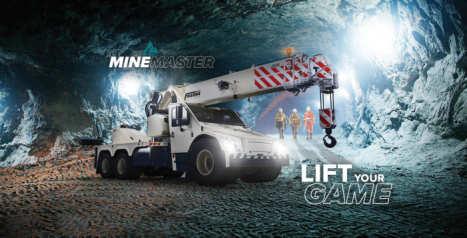
Metso Outotec has launched the Crossover feeder, which is a hybrid feeding solution suitable for a wide range of greenfield and brownfield applications. Thanks to its innovative modular belt-over-apron design, the Metso Outotec Crossover feeder delivers unmatched levels of availability and reliability for bulk material transportation at lower overall costs. ”We are very excited to announce the launch of the Crossover feeder. It was developed to provide a flexible and economical solution in a wide range of applications where belt and apron feeders are not the optimal fit,” said Brian Bookamyer, director, bulk materials handling at Metso Outotec.
The Crossover feeder features a reduced height of up to 50% as compared to conventional feeding technology. This lower height requirement provides an opportunity for CapEx savings by decreasing the excavation and civil works required. For retrofit applications, the reduced height profile allows the Crossover feeder economically replace existing feeders, including apron and/or belt feeders by lowering modification costs.
The Crossover feeder complements Metso Outotec’s versatile feeding solutions portfolio, which also includes Apron feeders and Belt feeders, enabling Metso Outotec to provide customers with the best feeding solutions to maximise performance and productivity. All Metso Outotec feeding solutions feature optimal design and dependable components to handle any duty in mining. Support through the comprehensive services network enables easy maintainability and minimal downtime.
Protecting the most valuable resource
Christian Schepers, export manager at Hermann Sewerin GmbH, discusses combatting water scarcity, gas leak detection and supporting a skilled workforce in Africa.
African Review: When did Sewerin enter the African market and what are some of the challenges posed by the continent? Christian Schepers: Especially with our French subsidiary, SEWERIN SARL, we have been very well networked in Francophone Africa for more than 20 years and are well established in the market. The first partners are also working with us in Anglophone Africa. Water is one of the most valuable goods, if not THE most valuable good on our planet and especially in Africa we would like to make our contribution to protect it and to ensure a safe supply for all parts of the population.
Most of the African utilities are in public and not in private hands. There are often no financial resources available for investments in the distribution networks. So finally they are depending on donors investing in projects. To get into these projects is a big challenge for us as leak detection usually covers only a small part of the tenders and is not seen as so important. Further the training sessions are scheduled too short so that users are not able to handle the devices successfully in the field to the point that they are not used at all and put into storage.
Additionally, it is important to mention that leak detection can only be done efficiently when the organisational structures are optimised to its need. For example, it does not help any utility to find 1000 leaks when they are not able to repair them because of the lack of spare parts, etc.
Often utilities do not have detailed network plans. This complicates our job and forces us to create different strategies compared to Europe. AR: How do you ensure that your solutions are deployable in regions often restricted by a lack of a skilled workforce? CS: We see ourselves as holistic partners and caregivers. For this purpose, we have very well trained partners in Africa who not only market our products, but also offer training and instruct and support customers and users step by step in the application and handling of our devices. These partners ensure the after-sales support which is essential for us. Hermann Sewerin GmbH is highly interested in creating a trustful and sustainable long term business with its customers.
For this reason, Sewerin was and is active in projects with different partners. These projects have got the target to transfer knowledge and our practical experience. One example is our current project together with the GIZ and the AHK in Ghana to support the ATTC training centre in Accra with technical equipment and theoretical training materials. This shall help the philosophy of leak detection of local companies.
AR: How do your solutions help combat water scarcity in Africa? CS: One factor that goes into water scarcity is that pipeline networks are often not inspected and maintained. Utilities are often unable to verify the real water loss volumes in their supply system. In addition, there are illegal water withdrawals, which are not counted and accounted for. Here, too, we support local companies in detection and analysis.
Intermittent water supply is not unusual in African cities but it is important to mention that it is mostly not caused by the lack of water in those regions. If you have 60% to 70% of losses in your distribution network it is very difficult to treat and provide enough water to the customers. So finally the distribution time is shortened and the pressure in the network is reduced.
It is often not mentioned that the reduction of water losses is also reducing the energy consumption of water utilities. You have to consider that water treatment and transport is mainly done by pumps. These pumps transport firstly the water from the water resource to the treatment plant. From there it is transported to the customers. So finally all the energy that was spent before gets lost with every leak that is not repaired.
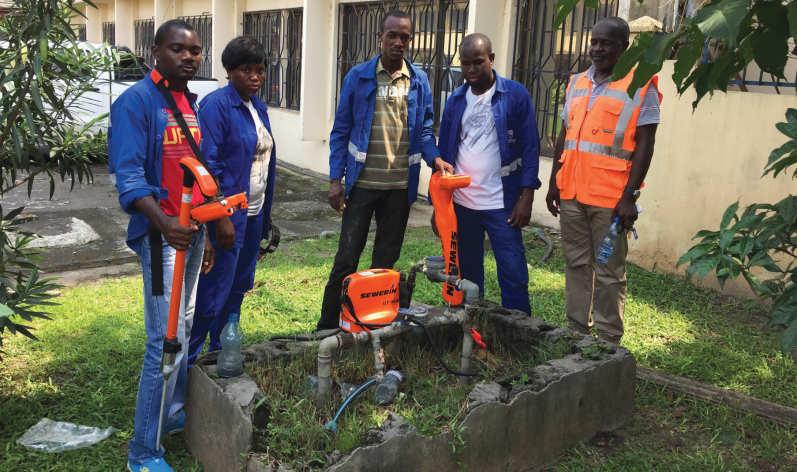
AR: How can gas leak detection equipment help the industry to reduce the energy deficit? CS: Our devices are mostly designed to find leaks in natural gas distribution networks. This happens by measuring the methane concentration in the air. These devices can also be used for industrial purposes. A further technological focus is lying on the analytics of biogas. For this application we offer stationary solutions and portable solutions to monitor the production process. Our devices are mostly sold to the Maghreb region. ■
Sewerin has been established in Africa for more than 20 years.
Cleaning rivers, cleaning oceans
Plastic pollution in the ocean remains a serious problem affecting the environment, human health and key African industries such as fishing. Stephen Williams reports.
Shortly before world leaders gathered in Glasgow for COP26, the Ecomondo event in Rimini, Italy showcased how businesses were also tackling global environmental challenges.
A number of African governmentsponsored delegations were in attendance. Visitors from South Africa, Nigeria, Rwanda, Ethiopia and Uganda were enthusiastically discovering the very latest technologies – which covered everything from water and sanitation to the off-shore generation of electricity to power the production of hydrogen.
There was much to see over the five-day exhibition, and the focus was very much on how individuals and businesses can reduce their greenhouse gas emissions.
But, interestingly, there was also an exhibitor that dealt with another critical environmental problem –plastic pollution of the oceans.
The Ecomondo exhibitor in question was an Italian company called River Cleaning.
Tackling plastic waste
River Cleaning are conducting the first trial of a revolutionary modular ‘barrage’ system on the Brenta River, removing debris from the water course before the waste reaches the oceans
It is estimated that a minimum of 14 million tons of plastic ends up in the oceans and 80% of this flows from rivers and waterways.
This is an increasingly serious problem with an ‘island’ of plastic waste floating in the mid-Pacific the size of Iberia.
It is sobering to think that, according to the UN Environmental Programme (UNEP) this waste island is only the 15% of the plastic matter that floats: another 15% remains in the water column while 70% rests on the seabed.
Various studies have indicated that plastic pollution is a widespread problem that threatens the health of marine species, food safety and quality, human health, coastal tourism as well as contributing to climate change. Fisheries in particular suffer direct economic impact from marine plastic pollution.
By directly impacting fishing and fish stocks, marine plastic pollution has a negative impact on the economy as well as the livelihoods and security of African populations. The UN 2030 Agenda for Sustainable Development (goal 14) calls for action to “conserve and sustainably use the oceans, seas and marine resources and by 2025 prevent and significantly reduce marine pollutions of all kinds, particularly from land-based activities.”
Clearly it would be much preferable for plastic waste to not enter rivers in the first place, but accepting the reality that was unlikely to be appreciated any time soon, River Cleaning has developed a solution that is not only simple and effective but relatively affordable.
The solution is a string of circular spinning cups that capture waste. The devices are strung diagonally across the river and move the waste they collect to a pen at the bank where it can be removed from the water and properly recycled.
What makes the River Cleaning system so useful is that river traffic is not affected; boats simply push the modular barrage beneath them, and they refloat after the boat has passed. And being a modular system, they can be strung together for any width of river. They capture around 90% of floating plastic debris.
One of the buzz-phrases of the Ecomondo exhibition was ‘circular economy’ which, as stated by UNIDO, would move industries in plastic value chains towards more innovative, resource efficient sustainable production.
Initiatives such as the River Cleaning system are clearly a step in that direction. ■
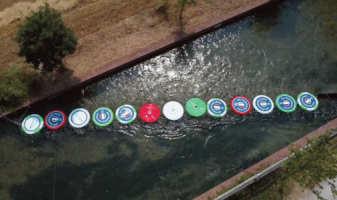
Image Credit: River Cleaning
The River Cleaning system removes debris before it reaches the ocean.
Advertiser’s Index
Cantoni Motor S.A.........................................................................23 Caterpillar SARL..............................................................................35 Caterpillar SARL Dubai Branch..................................................52 Condra Cranes and Hoists..........................................................41 Diehl Metering FZE..........................................................................9 Eko Hotel and Suites......................................................................51 IMECO Handelsgesellschaft m.b.H...........................................31 Mantrac Egypt..................................................................................33 Normet Group Ltd..........................................................................45 Volvo Construction Equipment Germany GmbH................5 Wirtgen International GmbH........................................................2
Sanjeevv Bhatia, chairman and CEO of the SB Group, which comprises a selection of continental building and manufacturing companies, on how Africa can utilise smart building technologies to solve urbanisation issues.
Africa is rapidly urbanising. As per, by 2050, it will be home to more than 2.5 billion people- with 55% in urban centres. This has many implications for liveability, energy infrastructure, environment, and safety of African cities. The effects of rapid urbanisation are already manifesting through rising energy costs and increasing regulations, but there are calls for transition strategies that can reconcile urbanisation with sustainability. One of the most prominent among the potential strategies being considered to achieve this are smart building solutions.
Africa’s feasibility for smart building solutions
Africa has witnessed a surge in market-driven developments in real estate. Market liberalisation, combined with the strong end-user interest, has incentivised investors to look favourably on the African market. These investors are particularly drawn towards new smart city projects, as urban centres are plagued by socioeconomic issues. However, Greenfield developments could deepen inequalities, undermining holistic growth. This dilemma calls for parallel developments, with equal emphasis on new and old buildings. Africa has sizable old building stock, characterised by legacy systems and operations, which are resourceintensive, and hard to optimise.
Imminent urbanisation will depend on effective optimisation – Africa’s socio-economic challenges require optimisation that is both costeffective and easily implementable.
Imminent urbanisation will depend on effective optimisation... that is both cost-effective and easily implementable.”
SANJEEVV BHATIA, CHAIRMAN & CEO OF SB GROUP
The ‘Android Approach’ to optimising existing buildings in Africa
The open-protocol building systems can be likened to Android OS, which is open source. In the ‘Android approach’ to buildings, open-protocol controllers are retrofitted to existing BMS/BAS, for vendor-agnostic integration of all assets.
This enables deep-dive analysis, leading to higher efficiencies and performance, optimal energy consumption, and savings – all with existing systems, without cost-intensive hardware replacement. With no vendor lock-ins, owners and operators have the freedom to work with any service provider thereafter, and replace them if they fail to deliver.
‘Androidification’ allows them to add new systems to infrastructure as and when innovations emerge, to keep pace with developments – which bodes well for Africa’s parallel-development proposition.
This ‘Android’ approach to buildings is the brainchild of Netix Global, a global smart building solutions provider. Using Netix’s approach to solutions and implementation, ODS Global – an integrated building management service provider – has worked on BMS and maintenance of Emaar’s 44 towers across Downtown Dubai and Dubai Creek Harbour. Netix’s retrofit solution enabled ODS Global to avoid replacing the entire system and help Mazaya Holding save 75% of costs. The openprotocol solution played a part in ODS Global bagging a three-year maintenance contract of 24 DAMAC Properties towers, a mandate to upgrade and maintain three Mazaya Towers’ buildings, and system integration projects in JAFZA Convention Centre, the BVLGARI Resort in Jumeirah Bay, the Pullman Hotel, and the Emirates Airlines Staff Accommodation in Dubai.
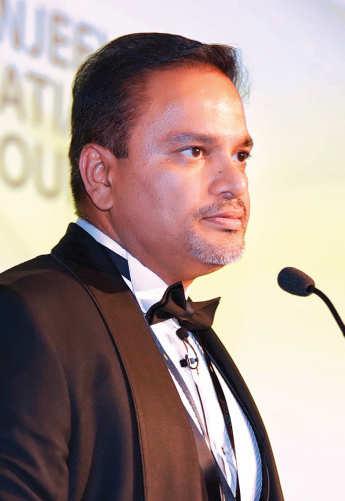
A host of building technologies could rise to solve Africa’s rapid urbanisation issues.
African markets are ripe for digitalisation
Increased climate consciousness, and consensus on the ability of technology to drive sustainable transition, are energising digitalisation in Africa. This development is particularly pronounced in the real estate industry and its verticals.
The is expected to grow at a CAGR of 11.2% from 2021 to 2026. Forward-thinking developers, owners, and facility managers, are poised to differentiate their building portfolios and tap into investors’ new-found interest in Africa.
Such solutions are already being adopted in competitive Middle Eastern markets. The global launch of ‘Netix Novus Partner Program’ – Netix’s global initiative facilitating the ‘Android approach’ – received an enthusiastic response, with industry stalwarts like Jehad Abu Shamiyeh, CEO of Electro Power Systems, KSA; Vivek Wagh, Business Development Director, SB Group International, Oman, Africa & South East Asia; and Jagdish Rajan, CEO, Garnet Technologies, part of JBK Qatar, joining the programme.
In a largely untapped market like Africa, a “Brownfield revolution” optimising old buildings can enable sustainable transformation and facilitate smart cities. Regional stakeholders will be better positioned to create new value propositions, provide global-standard services, and simultaneously achieve ROI; while enhancing the competitiveness of the entire African real estate sector. In other words, with optimisation of existing infrastructure, the imminent urbanisation can be turned into an opportunity for the continent’s real estate led growth. ■

